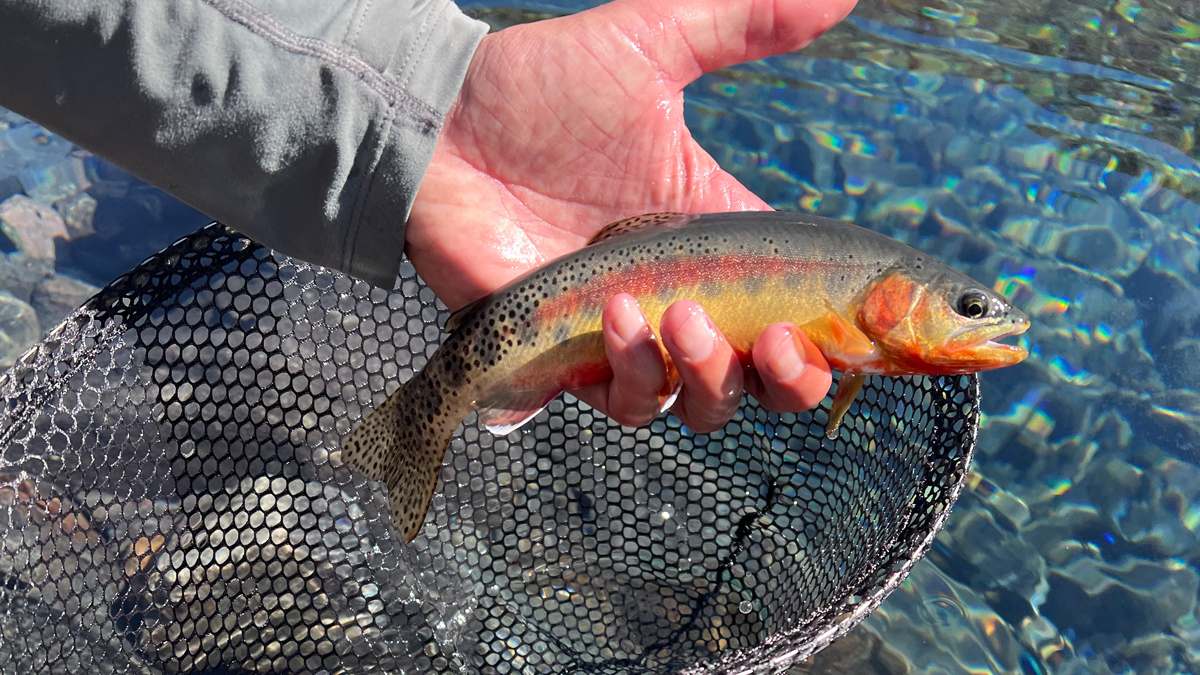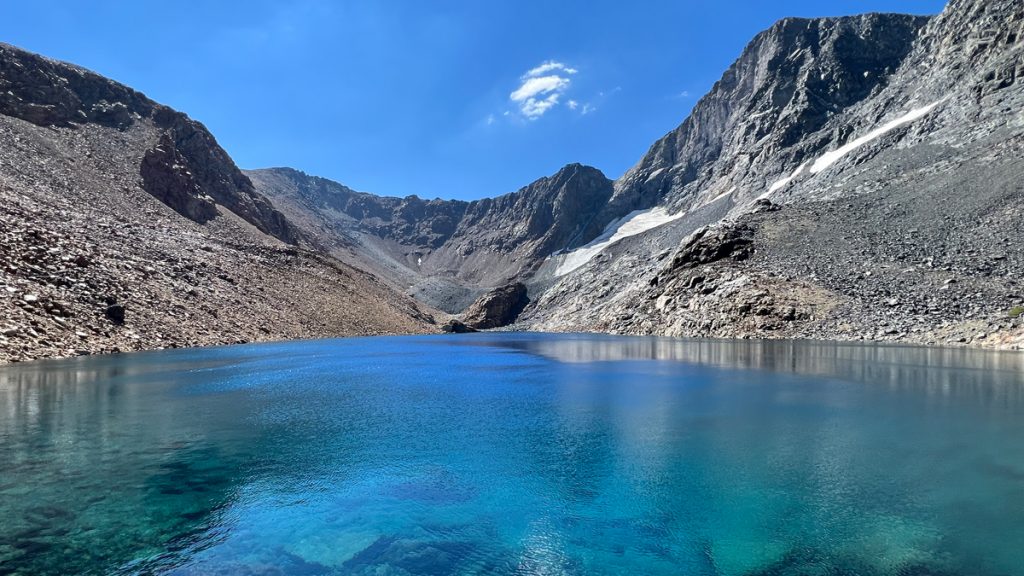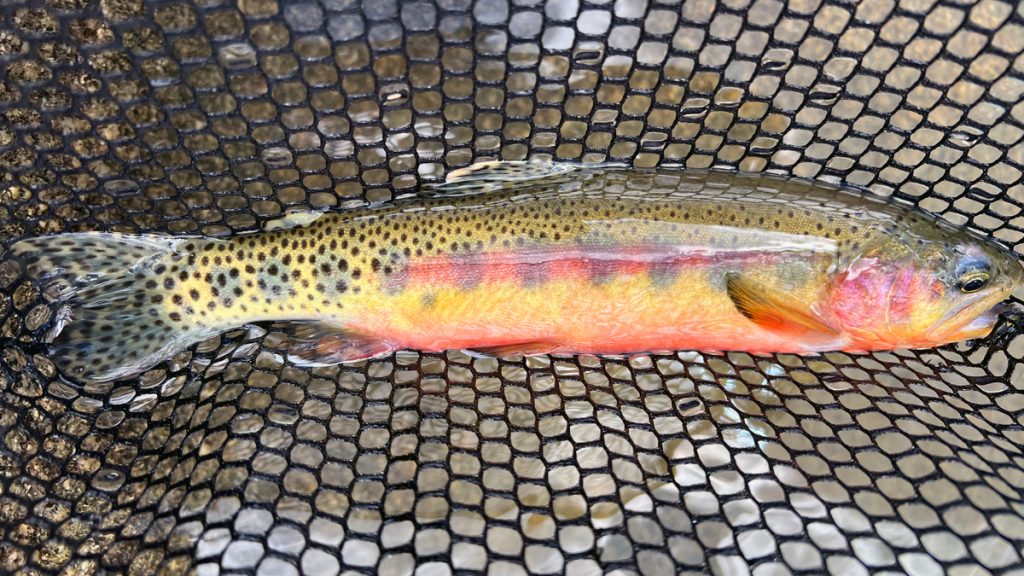Sage Grouse Hunting Tips for Success
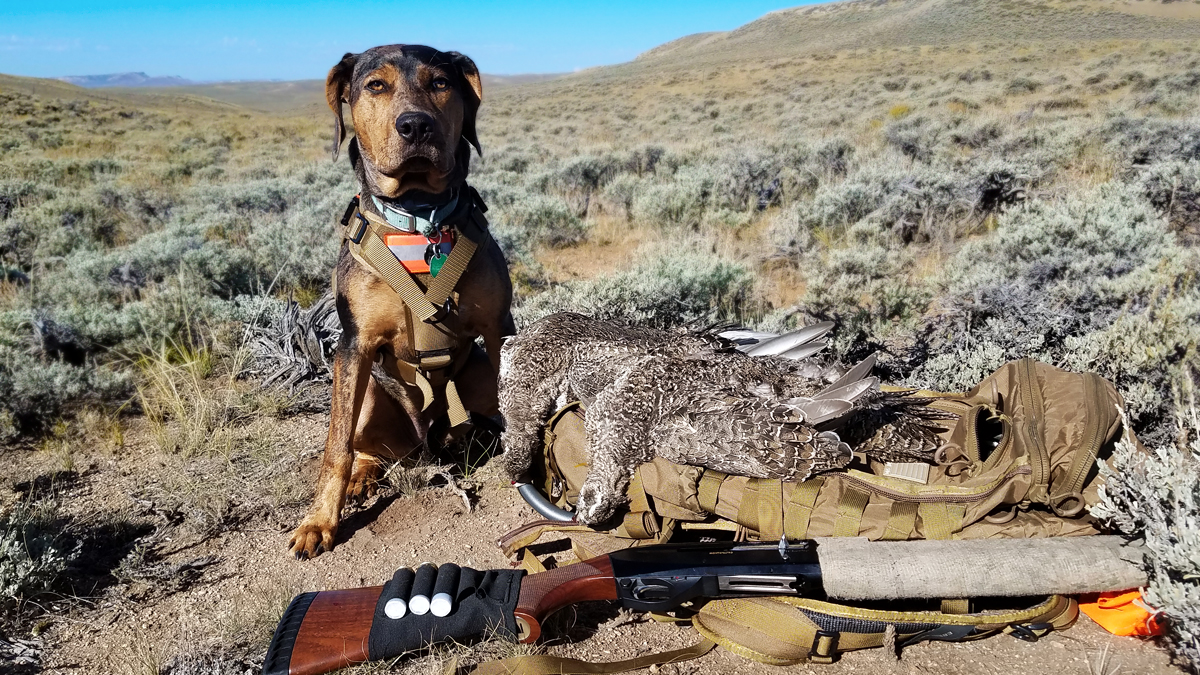
Watch our Ultra Short on Sage Grouse Hunting: Sage Grouse Hunt (YouTube)
Sage Grouse hunting isn’t simply a pursuit that rewards those that cover as much ground as possible. It certainly can help to cover a lot of ground, but a smarter approach can improve your hunt, and reduce a significant amount of walking. While no strategy is bulletproof when it comes to the pursuit of Sage Grouse, these tips should help.
Habitat and Sign
The most important factor in finding birds is knowing where they like to be in their habitat. Like every other critter, they require food, shelter, and water. We always start our hunt by targeting areas with slightly taller sagebrush that provides shelter at the edges of large clearings, depressions, bottoms of draws, and watering holes, then walk the perimeters.
You’ll know where they have spent time by watching for droppings in these areas, and while they can move quite a bit, they are probably still in the area, as it’s either their semi-permanent feeding ground or shelter. The Sage Grouse is a survivor, and able to get enough water from their food sources, primarily consisting of tender sage buds and shoots, that they don’t need watering holes. Therefore, it isn’t necessary to locate water, to be successful. If you do harvest a bird, its helpful to examine the contents of its crop, and know exactly what they’ve been feeding on, so that you can locate better habitat later.
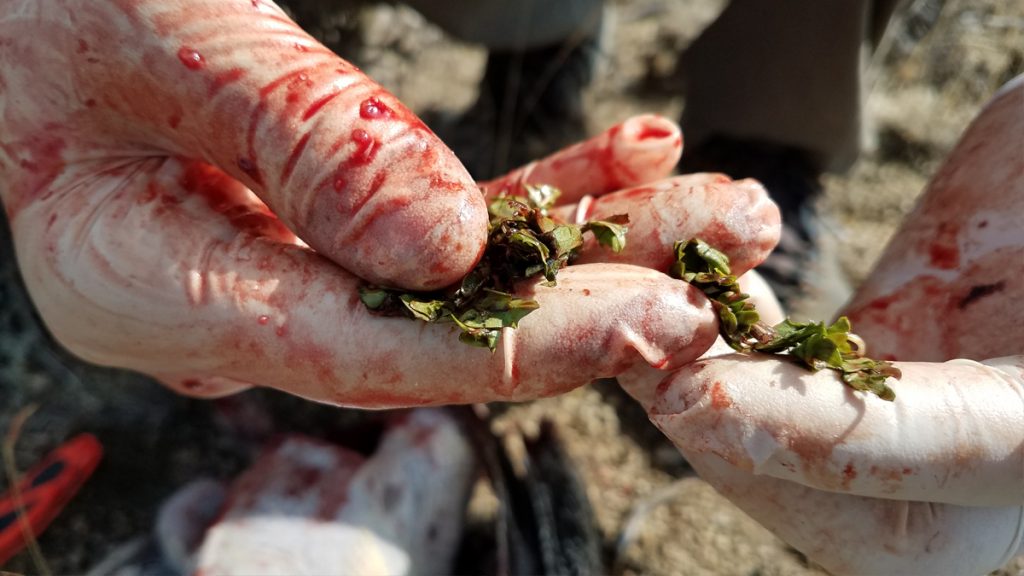
The contents of a birds crop can teach you a lot about the habitat and feeding behaviors of birds.
Weather
Both waterfowl and upland birds tend to lock down when it is too windy, and grouse are no exception. If it’s too hot, they’ll seek shelter under taller sagebrush. If it’s too windy, they’ll seek refuge under taller sagebrush. If it’s raining, they’ll seek shelter under taller sagebrush. Essentially, they’ll be sheltered under sagebrush, and therefore walking areas with grouse droppings and good habitat is the best method for finding birds, regardless of the weather. However, a recent rain or dusting of snow, can make it easy to identify the footprints left by sage grouse, and will confirm you are in an area recently used by grouse.
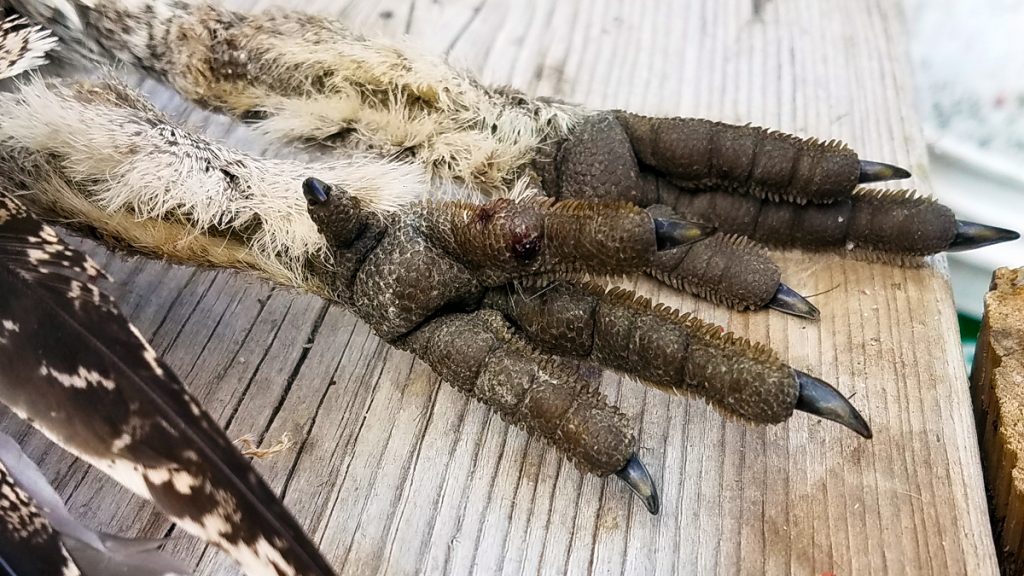
The interesting dinosaur like legs and feet of the sage grouse
Be Ready
Never expect the flush to be over. Whether hunting with or without dogs, grouse frequently remain locked down and well hidden, until the last possible second – especially when other birds have already flushed.
So instead of sitting there in disbelief that you didn’t get a shot off, or maybe you missed, snap out of it and reload. Reload quickly and be ready for more birds to flush – or be surprised and disappointed that you weren’t ready to take a shot.
Glassing
If you continue to fail at locating and flushing birds, consider getting a high vantage where you can glass vast fields of sage at sunset. You’ll hopefully spot a covey of grouse flying in or around the area. Make a note of where they settle down for the evening and plan to start your morning hunt right there.
Conclusion
Hopefully, you’ll put some of our advice to work in the field and find more success. But beyond success, safety is a huge factor when sage grouse hunting. With other big game seasons open at the same time as the limited Sage Grouse season, we make absolutely sure to stay visible and avoid pressuring big game animals and hunters. Also make sure your hunting dogs do the same. We protect our dogs with vests and skid plates, collars, high visibility blaze, and provide plenty of water for everyone, as the dessert makes things disappear, and can be a rather unforgiving place.
The Mendota skid plate, or a tactical dog harness adorned with custom blaze patches with your dog’s name and your phone number on them is a great idea, should you lose your dog. If your dog is still young and in training, then a collar like the SportDOG 425X Remote Trainer is a great shock collar with a 500 yard range. However, you may eventually want to get a GPS collar and tracking system like the Dogtra Pathfinder or the Garmin Astro 430, depending on the seriousness of your hunting, your dog, and your pursuits.
Following the Sage Grouse opener, we grabbed a bite to eat and met a hunter that lost her dogs. It happens, so at a minimum, be sure your dogs have identification information on them and are highly visible.
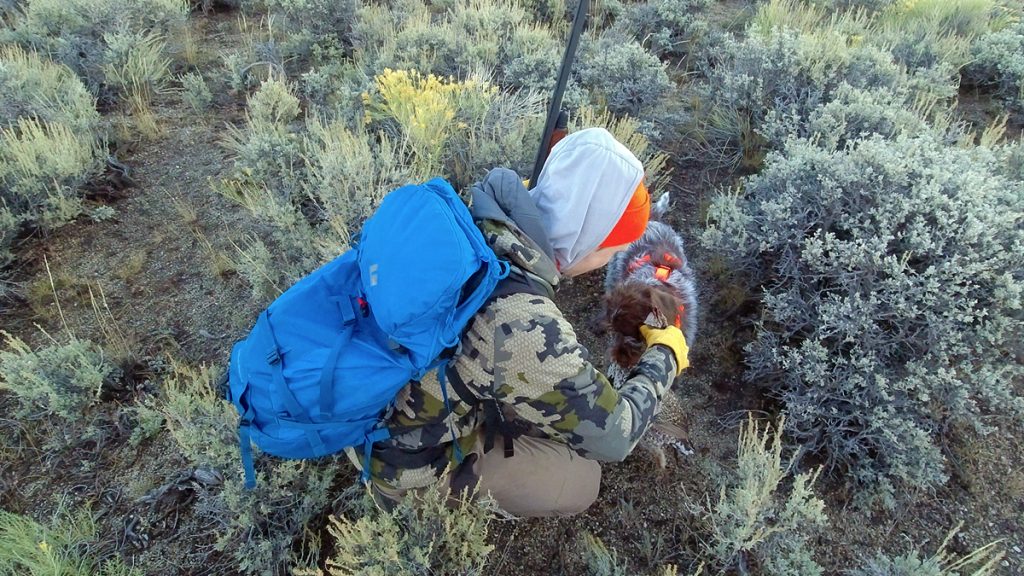
Working on the retrieval of a downed sage grouse with a young puppy
